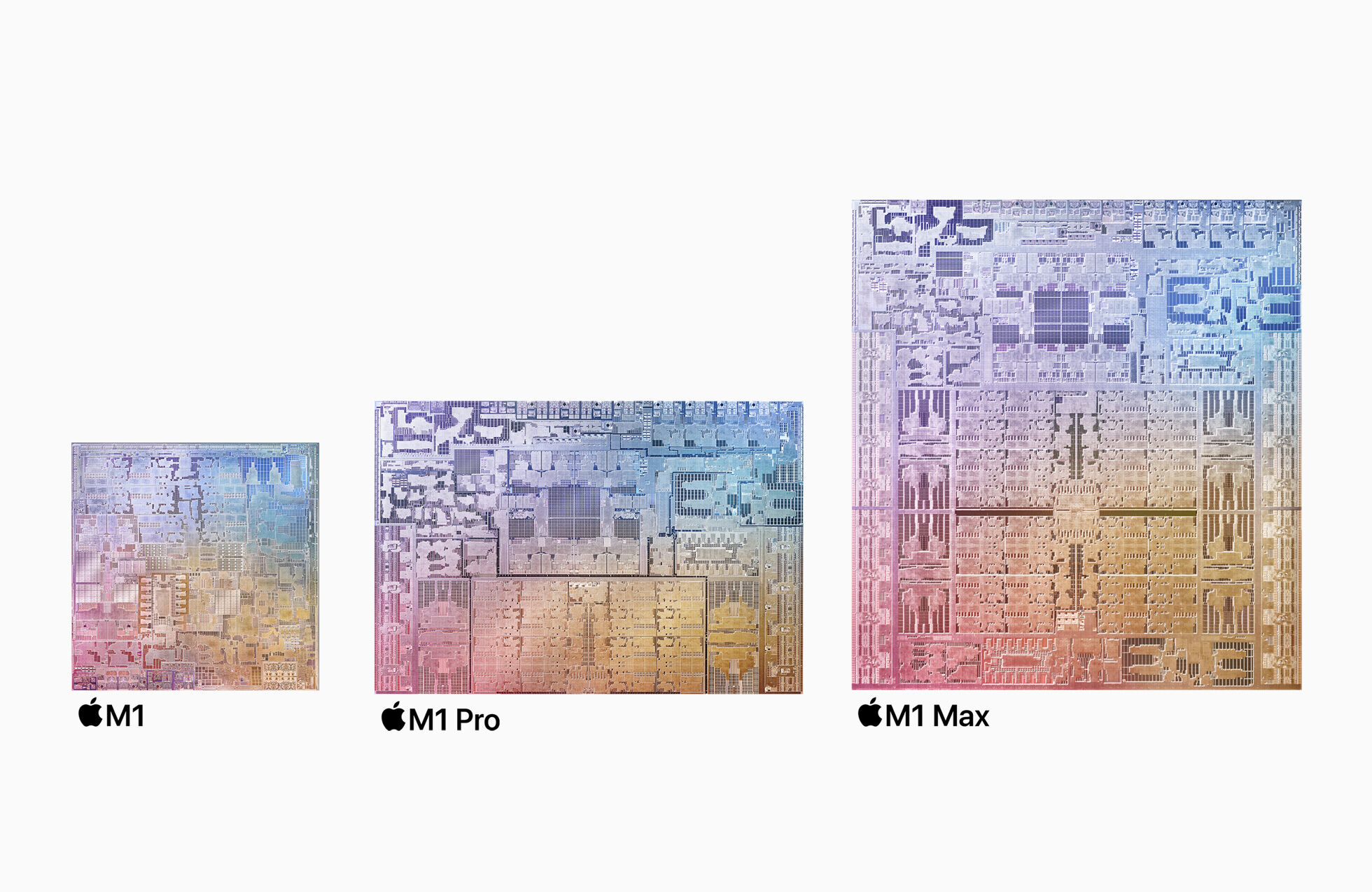However, there aren't many other options for integrating macOS apps with those on iPadOS and iOS. Perhaps Apple will replace Launchpad on the Mac with App Library, similar to how the iPad and iPhone organize their apps by category.
Any future development of apps for all three platforms will almost certainly happen concurrently.
How Apple can use machine learning
Apple's neural engine is used for machine learning-based text detection in pictures, which was included in the 2021 system upgrades for the Mac, iPad, and iPhone. A neural engine was first included in the A-chips of iPhones and iPads and is currently found in many Macs' M1 CPUs.
The live text also works on select Intel-based Macs where the graphics processor is employed, but it's a Neural Engine that makes the feature shine. We expect Apple to build more beneficial machine learning-based capabilities for the upcoming macOS.
The Photos app is a good candidate for advanced machine learning because it might benefit from better recognition of individuals and image content. Machine learning could also help with automatic photo and video enhancement. You should, however, be able to turn off such automated operations.
Text and speech recognition and gesture detection utilizing the built-in camera are further potentials for machine learning advancements.
The Neural Engine allows machine learning to take place directly on the device, which is advantageous regarding data security.
Passwords and security for all applications
The Passwords system preference was added to macOS Monterey, owing you to manage and view all of your passwords. User names and passwords for websites visited in Safari and network, and email accounts have long been stored in the Keychain. If you enable iCloud Keychain, these can be synchronized across various devices.
However, for the time being, this password management only works with Safari passwords; other browsers do not support them. Passwords for email accounts, WLAN access, and network drives can only be discovered in keychain management, not here.
This isn't exactly a model of user-friendliness. Apple may integrate password management and offer it up for other programs in the next edition of macOS, but this would obstruct password managers from other manufacturers.
Apple might also use the open web standard Web Authentication (WebAuthn), which is only available as an experimental feature for developers in macOS Monterey, to continue the journey to signing in without passwords.
Without requiring any passwords, this technology, based on the private and public key system, would allow users to log in to websites or apps using Face ID or Touch ID and Passkeys stored in the iCloud Keychain.
End-to-end encryption protects communication via Messages and FaceTime from prying eyes. However, encryption is still missing when interacting over email. Even though MailKit has had a programming interface (API) since macOS Monterey, which permits, among other things, Mail extensions to be built to sign and encrypt emails, nothing has come of it.
In 2023, Apple might be able to offer encryption in the Mail. After all, you've been able to hide email addresses for privacy concerns since macOS Monterey, but you'll need iCloud+.
iCloud+ might also need additional intermediate storage levels because, for specific users, 50GB or 200GB is insufficient, but 2TB is enormous and expensive. How about an Apple 1TB tier?
The appearance
We don't expect any more dramatic changes in the design of the user interface next year, given that the appearance of macOS Big Sur differed significantly from the previous edition. Mainly because the Human Interface Guidelines for macOS 11 have remained unchanged.
In macOS Monterey, Apple attempted to make a significant change in the functionality of Safari but subsequently reverted to using the old version as the default and the new one as an alternative. As a result, we don't anticipate any future significant changes to other programs that would significantly alter their regular operation. However, there may be additional options for other Apple products to customize the interface to your preferences.
Furthermore, developers might make hidden functionalities available that are only visible when the mouse pointer is moved to a specific position, such as the options in Mail for saving attachments or the close notification button. Surprising functions aren't always easy to use.
It is envisaged that the content of Maps would be improved in various European countries. Apple, for example, now only provides cycle lanes in a few places, as well as California and China. This is an inexplicable gap for a corporation committed to environmental conservation.
It can't be due to a lack of funds. Perhaps Cupertino does not want to compete with providers of bicycle navigation systems. It's doubtful because the bicycle symbol is a common sight on maps, yet it has no function.
The macOS 13 engine room
Apple developers will have to adapt and optimize the operating system and programming interfaces to the next generation of chips because chip development at Apple does not cease.
Before the first Macs with Apple Silicon were released in 2020, Apple had already completed most of the work required to convert macOS to the M1 processors. On the most powerful Macs, these chips will very certainly have more CPUs than the M1 generation, and possibly many of them installed in a single Mac.
All of these computer devices must be able to run without stuttering under the new operating system. However, as a user, you should be unaffected by these advancements in the background; other than that, activities are completed swiftly.
For a while, Apple will continue to drive on two tracks so Macs with Intel CPUs can run the upcoming macOS. Monterey is compatible with the 2015 iMac, MacBook Pro, MacBook Air, the 2014 Mac mini, and the 2013 Mac Pro. Monterey will also operate on 2016 12in MacBook. Check out this page to see which Macs are compatible with Monterey.
Apple is likely to keep the practice of naming each macOS version in addition to the version number. The version number will be 13 this time. As for the name, we expect it to be named after a California location, as has been the case since Mavericks debuted in 2013. Previously, Apple's Mac operating systems were referred to as "big cats."
9to5Mac discovered that Yosemite Research LLC owned the name "Mammoth," naming rights for computer systems. You would think this means Apple won't be able to use that brand, but the corporation has previously purchased and transferred other naming rights. Yosemite Research LLC also bought the names "Monterey" and "Redwood" for computer systems, but the last name's rights were not extended.
"Mammoth" refers to Mammoth Lakes, a winter sports destination on the Sierra Nevada's east side. So the next macOS may have this moniker, indicating that it'll be a significant release. However, we don't believe Apple will use this term because it could lead to jokes about macOS being a defunct
operating system.
Conclusion
Apple's Neural Engine allows machine learning to take place directly on the device, which is advantageous regarding data security. Text and speech recognition and gesture detection utilizing the built-in camera are further potentials for machine learning advancements.
The Passwords system preference was added to Monterey, allowing you to manage and view all of your passwords. iCloud+ might also need additional intermediate storage levels because, for specific users, 50GB or 200GB is insufficient, but 2TB is enormous and expensive.
Apple might also use the open web standard Web Authentication (WebAuthn), which is only available as an experimental feature for developers in macOS Monterey.
Apple's Maps app now only provides cycle lanes in a few places, California and China. This is an inexplicable gap for a corporation committed to environmental conservation. Apple will continue to drive on two tracks so Macs with Intel CPUs can run the upcoming macOS.
There's no reason to believe the current version, 10.14, won't support these Macs. The name "Monterey" may also refer to a California location, as has been the case since Mavericks.




